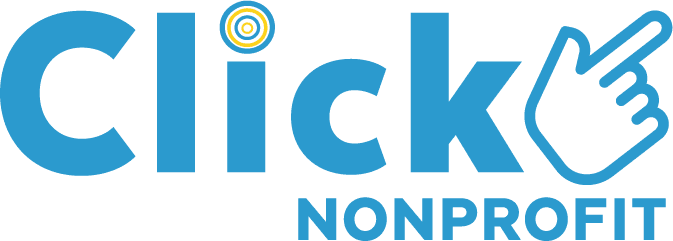Starting a nonprofit can be a great way to support a cause you believe in, help serve your community, or start a rewarding career. Whatever your reason is, it can be a bit of a daunting task to start a nonprofit from scratch.
Understand Nonprofit Basics
What is a nonprofit?
A nonprofit typically refers to a business or organization that’s focus is to serve the community or a public cause, rather than financial gain for the individual owners and shareholders. Other than profit, the biggest difference between a nonprofit and for-profit business is that nonprofit businesses are tax-exempt according to the IRS, typically under section 501(c)(3).
A nonprofit organization falls under section 501(c)(3) if it is:
- Charitable
- Educational
- Literary
- Religious
- Scientific
- Helps with public safety
- Promotes amateur sporting activities
- Helps prevent cruelty towards children or animals
If you choose to form a nonprofit, all of your operating profits will need to be re-invested in your organization or towards your cause.

Do Your Research
Just because you are wanting to start a nonprofit to help your community or a cause doesn’t necessarily mean it is going to be successful. There’s plenty of research and planning you need to do before you even get to starting your nonprofit.
It is a noble cause to help and support others, but when you do it strategically, you greatly increase your capacity to serve others.
Identify a need
There are plenty of great causes that nonprofits help support. Anything from animal shelters, veterans organizations, and homeless shelters. While there is no shortage of causes available to pick from, you should do your best to find one that has a current need that your nonprofit will satisfy.
Research potential competitors & collaborators
One of the best ways to find a need is to look at what other similar organizations are doing. This will help you see the full scope of your cause and hopefully find some gaps where you can fit into the puzzle.
In the nonprofit world, it can be a little tricky trying to differentiate between competitors and collaborators. On one hand, similar nonprofits will largely be competing for the same pool of revenue and donations. On the other hand, if you can join forces with complementary nonprofits, you can potentially increase the impact and reach of each organization individually.
For example, if your community already has 2 community centers for veterans, and you decide you want to open a 3rd that is very similar, you might all struggle due to a lack of differentiation and funding. However, in that same community, there might not be a transportation service for elderly veterans. This opens up the door for your nonprofit to be the only service in town, while also being able to collaborate with other veterans organizations.
Reach out to those who your organization would serve
Another great way to identify a need is to go straight to the source. It’s common for the person starting a nonprofit to not be a part of the group that their nonprofit would help serve.
Having a couple dozen brief conversations can give you insight and a new perspective on what that community truly needs.
Develop A Business Plan
To start a successful nonprofit, you need a business plan.
Some nonprofit founders make the crucial mistake of not treating their nonprofit like a business. Even though you will be helping others and hopefully receiving adequate government and/or private assistance, you still need to be making money to keep the lights on.
A critical step in creating a business (nonprofit or for-profit) is to create a rock-solid business plan. Your business plan will serve as a roadmap to guide you through the twists and turns that come with operating any business. It is also an important document to receiving funding and financial aid.
What to include in your business plan:
Executive summary
Your executive summary is going to be no more than one page and summarizes what the reader will find in the body of the business plan. This section is where you touch on the key points that will make your nonprofit a successful and worthwhile endeavor.
Products & Services
In this section, you will be laying out the basic goods & services you will be providing for supporters of your organization. Things such as:
- Memberships
- Merchandise
- Events
This isn’t your full revenue stream, but it should give a good outline of what services you will be providing towards your cause.
Market analysis
Here you will identify what the current landscape is in your chosen “industry”. As we mentioned earlier, this can be things such as identifying a need, competition, and potential collaborators. A useful tool for this section is to include a SWOT analysis, which lays out your organizations:
- Strengths
- Weaknesses
- Opportunities
- Threats
Marketing plan
Your marketing plan is going to show how your nonprofit plans to attract supporters for your organization. It should include:
- Who you will serve
- How you will reach out to people who care about the cause
- How you will convince those people to support your organization
Too often people think that since they are supporting a good cause that donors and supporters will naturally flock to them. This rarely happens because there are so many other things demanding their attention and support. Having a strong marketing plan lays a solid foundation for your nonprofit to build upon. Learn more about how to create a marketing plan for your nonprofit.
Operational plan
Your operational plan covers the nuts and bolts of your business, things such as:
- Key staff
- Volunteers
- Location(s)
- Supplies and equipment
- How you will provide your services
Organizational structure
Your organizational structure will lay out the roles of all key staff and managers of the organization. It helps to discuss how each member’s role will help the organization succeed and how they fit in amongst all the other key staff members.
Financial plan
Here you will show potential investors:
- Your budget
- Cash flow analysis
- How you will generate revenue
- Any loans or grants you will be applying for
Making financial projections can be a bit challenging. Depending on your situation and expertise, it might be a good idea to recruit the help of an accountant to assist you with your financial plan.
Build A Team
As mentioned, a strong business plan is a great foundation to build upon. Who you hire for your organization are the ones that are going to be realizing your plan and building your nonprofit.
Selecting the right individuals for your organization can be a challenging process, but here are some tips to help you get started when recruiting board members and staff. Try to find individuals who are:
- Committed to your cause
- Have a positive attitude
- Dependable
- Self-motivated
- Interested in making a change
- Easy to communicate with
- Able to change plans and be flexible
The main point is to look at people’s personalities and principles compared to having certain expertise or experience in a given field. Along with these characteristics, it’s recommended to assemble a board with diverse characteristics, expertise, and experience.

Become Legally Compliant
This part is usually the most daunting for individuals trying to start a nonprofit. They are afraid that if they miss something or make a mistake, they or their nonprofit could be in serious trouble.
While this is a legitimate concern, there’s only a handful of crucial tasks you need to do to become legally compliant. Along with this, if you miss one, there will likely be an official who will point this out before it becomes an issue. If you are truly worried about making a mistake, it can’t hurt to recruit the help of a lawyer to make sure you have all your bases covered.
The steps you need to take to get your nonprofit to be legally compliant are:
- 1. Register your nonprofit with the state
- File for an EIN with the IRS
- File for 501(c)(3) status
- File the Articles of Incorporation
- Draft Bylaws
- Register for charitable solicitation and fundraising
- Pay fees
Identify The Main Sources Of Revenue
Each nonprofit will have a different mix of revenue streams. Understanding where your money will be coming from will help you promote your nonprofit to the right audiences.
The 3 main sources of revenue for nonprofits are:
- Fees for goods and services
- Membership dues
- Events
- Merchandise
- Fundraising
- Regular donors
- Fundrasing
- Corporate Sponsors
- Government grants

Promote Your Nonprofit
Now that you have laid the groundwork to start your nonprofit, it is time to get the word out to potential supporters and donors. There are a number of ways you can do this, including:
- Social media
- Online advertising
- Local/print advertising
- Host events
- Partner with other nonprofits
- Develop a referral program (word of mouth)
When you are first starting a nonprofit, money can be tight. But there’s a handful of amazing resources available if you dig deep enough. Luckily, we’ve done the leg work for you on this one.
Google Ad Grants is a program that gives nonprofits $10,000 worth of Google Ads every month to help you spread the word about your nonprofit. On top of this, there are companies like Click Nonprofit that will help your nonprofit acquire this grant and optimize the ads, to ensure you get the best results possible.




